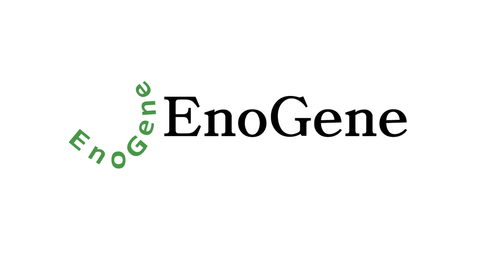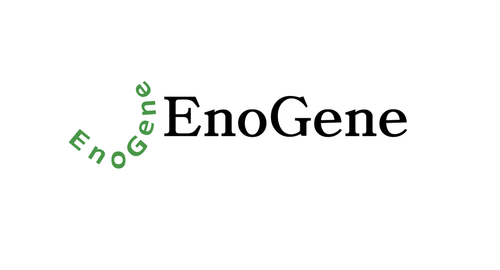Product Description
Phospho-PIK3CG (S1100) Antibody [APR05191G] | Leading Biology
Product Category: Polyclonal Antibodies
Host: Rabbit
Species Reactivity: H
Specificity: This PIK3CG Antibody is generated from rabbits immunized with a KLH conjugated synthetic phosphopeptide corresponding to amino acid residues surrounding S1100 of human PIK3CG.
Cellular Localisation: Cytoplasm. Cell membrane
Molecular Weight: 126454
Clone: Polyclonal
Gene Name: PIK3CG
Gene ID: 5294
Function: Phosphoinositide-3-kinase (PI3K) that phosphorylates PtdIns (4, 5) P2 (Phosphatidylinositol 4, 5-bisphosphate) to generate phosphatidylinositol 3, 4, 5-trisphosphate (PIP3) . PIP3 plays a key role by recruiting PH domain-containing proteins to the membrane, including AKT1 and PDPK1, activating signaling cascades involved in cell growth, survival, proliferation, motility and morphology. Links G-protein coupled receptor activation to PIP3 production. Involved in immune, inflammatory and allergic responses. Modulates leukocyte chemotaxis to inflammatory sites and in response to chemoattractant agents. May control leukocyte polarization and migration by regulating the spatial accumulation of PIP3 and by regulating the organization of F-actin formation and integrin-based adhesion at the leading edge. Controls motility of dendritic cells. Together with PIK3CD is involved in natural killer (NK) cell development and migration towards the sites of inflammation. Participates in T-lymphocyte migration. Regulates T- lymphocyte proliferation and cytokine production. Together with PIK3CD participates in T-lymphocyte development. Required for B-lymphocyte development and signaling. Together with PIK3CD participates in neutrophil respiratory burst. Together with PIK3CD is involved in neutrophil chemotaxis and extravasation. Together with PIK3CB promotes platelet aggregation and thrombosis. Regulates alpha-IIb/beta-3 integrins (ITGA2B/ ITGB3) adhesive function in platelets downstream of P2Y12 through a lipid kinase activity-independent mechanism. May have also a lipid kinase activity-dependent function in platelet aggregation. Involved in endothelial progenitor cell migration. Negative regulator of cardiac contractility. Modulates cardiac contractility by anchoring protein kinase A (PKA) and PDE3B activation, reducing cAMP levels. Regulates cardiac contractility also by promoting beta-adrenergic receptor internalization by binding to GRK2 and by non- muscle tropomyosin phosphorylation. Also has serine/threonine protein kinase activity: both lipid and protein kinase activities are required for beta-adrenergic receptor endocytosis. May also have a scaffolding role in modulating cardiac contractility. Contributes to cardiac hypertrophy under pathological stress. Through simultaneous binding of PDE3B to RAPGEF3 and PIK3R6 is assembled in a signaling complex in which the PI3K gamma complex is activated by RAPGEF3 and which is involved in angiogenesis.
Summary: Tissue Location: Pancreas, skeletal muscle, liver and heart.
Form: Purified rabbit polyclonal antibody supplied in PBS with 0.09% (W/V) sodium azide. Then, the antibody fraction is peptide affinity purified in a 2-step procedure with the control and phosphorylated peptides. The phospho-specific antibody is eluted with high and low pH buffers and neutralized immediately, followed by dialysis against PBS.
Storage: Maintain refrigerated at 2-8°C for up to 2 weeks. For long term storage store at -20°C in small aliquots to prevent freeze-thaw cycles.
Application: DB
Dilution: DB--1:500
Synonyms: Phosphatidylinositol 4, 5-bisphosphate 3-kinase catalytic subunit gamma isoform, PI3-kinase subunit gamma, PI3K-gamma, PI3Kgamma, PtdIns-3-kinase subunit gamma, Phosphatidylinositol 4, 5-bisphosphate 3-kinase 110 kDa catalytic subunit gamma, PtdIns-3-kinase subunit p110-gamma, p110gamma, Phosphoinositide-3-kinase catalytic gamma polypeptide, Serine/threonine protein kinase PIK3CG, p120-PI3K, PIK3CG
 Euro
Euro
 USD
USD
 British Pound
British Pound
 NULL
NULL

![Phospho-PIK3CG (S1100) Antibody [APR05191G] Phospho-PIK3CG (S1100) Antibody [APR05191G]](https://cdn11.bigcommerce.com/s-452hpg8iuh/images/stencil/1280x1280/products/867025/1159092/logo__92149.1659788186__09501.1659863468.png?c=2)
![Phospho-PIK3CG (S1100) Antibody [APR05191G] Phospho-PIK3CG (S1100) Antibody [APR05191G]](https://cdn11.bigcommerce.com/s-452hpg8iuh/images/stencil/100x100/products/867025/1159092/logo__92149.1659788186__09501.1659863468.png?c=2)
![Phospho-PIK3CG (S1100) Antibody [APR05191G] Phospho-PIK3CG (S1100) Antibody [APR05191G]](https://cdn11.bigcommerce.com/s-452hpg8iuh/images/stencil/500x659/products/867025/1159092/logo__92149.1659788186__09501.1659863468.png?c=2)
![PIK3CG Antibody (S1100) [APR06081G] PIK3CG Antibody (S1100) [APR06081G]](https://cdn11.bigcommerce.com/s-452hpg8iuh/images/stencil/500x659/products/868563/1160630/logo__92149.1659788186__83316.1659864430.png?c=2)



